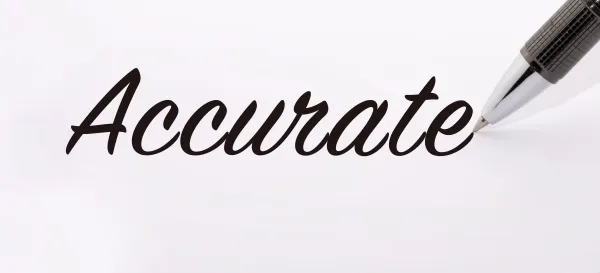Otolaryngology Coding Alert
5 Facts About Coding Ablation Procedures for Rhinitis
Several major payers are implementing negative reimbursement policies for ablation when performed for chronic rhinitis. By now, many otolaryngology coders have seen charts describing ablations for treating chronic rhinitis. What coders haven’t become as familiar with are how to report these procedures — and several payers recently made the process even more confusing. Check out five key tips to understand what you need to know about coding ablation treatments for rhinitis. 1. ENTs Perform 3 Main Procedures for This Service When otolaryngologists use ablation to treat chronic rhinitis (J31.-), they’ll typically use cryoablation, radiofrequency ablation, or laser ablation to balance the autonomic input to the nasal mucosa, which is believed to cut the nasal antigen response and improve the rhinitis symptoms. To perform these services, ENTs typically use one of two clinical modalities: 2. Payment for Ablative Services for Rhinitis Can Vary Insurers usually update their policies for paying certain medical procedures on an annual cycle. However, they may make changes to their reimbursement policies off this review cycle, and this can create a bit of a roller coaster effect for coders, who are often unsure how to report these services (and whether they’ll get paid for them). In some cases, payers will reimburse some of the ablation procedures, while in others, they won’t. “Also, keep in mind that although a policy may change for a payer, practices have negotiated contracts with payers and there may be reimbursement policy defined in the specific contract that the practice has with the payer,” says Barbara J. Cobuzzi, MBA, CPC, COC, CPC-P, CPC-I, CENTC, CPCO, CMCS, of CRN Healthcare in Tinton Falls, New Jersey. “If the payer makes changes outside the contract, this should be pointed out to the payer and appealed for payment.” For instance: In October, the Healthy Blue Managed Medicaid program for North Carolina released a position statement noting that “Minimally invasive treatment of the posterior nasal nerve, such as cryotherapy or radiofrequency therapy, to decrease the symptoms of allergic or nonallergic rhinitis is considered investigational and not medically necessary in all cases.” Therefore, this payer will not reimburse you for any such services as part of its reimbursement policy. “But if your practice’s contract with Blue Cross Blue Shield of NC states that treatments that are proven to be medically necessary and effective are payable, this arbitrary policy should be fought and the practice should try to get the payer to pay for the ablative treatment based on the science showing that the treatment is medically effective and necessary for patients suffering from rhinitis, Cobuzzi advises. “This can become a disagreement between your clinical experts and their clinical experts who are probably not otolaryngologists. Practices may be successful in getting appealed claims paid.” In April, Horizon Blue Cross Blue Shield of New Jersey released a policy stating that cryoablation, radiofrequency ablation, and laser ablation for chronic rhinitis are all considered investigational. However, the policy does not indicate that the Clarifix and RhinAer procedures are non-payable due to the investigational nature. “This is what practices should use as part of their appeal, requesting peer-to-peer review by another otolaryngologist, to determine the medical necessity and effectiveness of the procedure,” Cobuzzi notes. If a provider gets authorization based on medical necessity or via a specialty peer to peer review, the provider can still get reimbursed despite these reimbursement policies. “Because there is a risk that the payer may dig in their heels and not pay for these procedures, it is a best practice for the medical practice to have the patient sign an informed waiver where the patient agrees to pay for the treatment and is told the cost to them, should their third-party payer not pay for the service, even once proven medically effective,” Cobuzzi adds. 3. When Ablation Is Covered, Code According to Op Report If your insurer does pay for any of the ablation procedures of the posterior nasal nerve for rhinitis, you’ll need to select the code based on the service documented by the provider in the procedure note, rather than coding based on the device used. The following codes may apply, depending on what your surgeon actually performs and documents: 4. 30117 Cannot Be Reported As a Bilateral Procedure When you look at the Medicare Fee Schedule Database for 30117, you will notice that this code does not allow reporting as a bilateral code. “This means that should the procedure be performed on both the left and the right PNN, ablating the end of the PNN in order to control rhinitis, the code would be reported twice, with the second occurrence of 30117 modified with an XS (Separate structure…) modifier or modifier 59 (Distinct procedural service) if the payer does not process the X[ESPU] modifiers,” Cobuzzi says. “The MUEs [medically unlikely edits] assigned in the database are 2, which means that this code may be submitted up to two times in a single day, assuming that the two occurrences are supported by medical necessity and the documentation.” 5. Plan Ahead If your otolaryngologist is performing any of these ablation procedures for rhinitis (or plans to do so in the near future), contact your payers ahead of time to determine the patient’s third-party payer’s reimbursement criteria and review what your contract with the payer allows your practice for reimbursement policies. One final note: “Remember that all employer-sponsored insurance plans are regulated by the Employee Retirement Income Security Act of 1974 [ERISA], not your state insurance laws,” Cobuzzi says. “The plan falls under ERISA even if the employer requires the employee to pay 100 percent of the costs. ERISA covers over 80 percent of insured that are seen in a medical practice. ERISA has minimum requirements and coverage protections for patients. Insurance companies count on practices being ignorant about ERISA and accepting the rules as dictated by the payer. If the patient is covered by an employer sponsored insurance plan, turn to ERISA for guidance and assistance in appealing denials from the third-party payers.”


Related Articles
Otolaryngology Coding Alert
- Ablation:
5 Facts About Coding Ablation Procedures for Rhinitis
Several major payers are implementing negative reimbursement policies for ablation when performed for chronic rhinitis. [...] - Inpatient Coding:
Can You Answer These Inpatient E/M Coding FAQs?
Hint: Don’t forget modifier AI when necessary. Whether your ENT is seeing hospital patients following [...] - Clip And Save:
Check Which Inpatient Codes Otolaryngologists Are Reporting Most Frequently
If you’re getting to know the inpatient codes more closely, it might be a good [...] - Substitute Physician:
Summer Is Approaching: Understand How to Report Locum Tenens Services
Don’t let the NPI nuances slip your mind when billing for substitute physicians. With warmer [...] - You Be the Coder:
Can You Spot the Problem in This Claim Submission?
Question: I submitted notes to my insurer multiple times, and they are continuing to deny [...] - Reader Questions:
Understand HIPAA Compliance Rules
Question: Can we switch to gap analysis of how we implement HIPAA compliance instead of [...] - Reader Questions:
Know This Nosebleed Coding Solution
Question: Our ENT provider performed simple anterior cautery on a patient’s right nostril and anterior [...] - Reader Questions:
Understand What’s Included in Global Package
Question: Our surgeon performed a septoplasty (30520) and then, during the postoperative period, used a [...]




